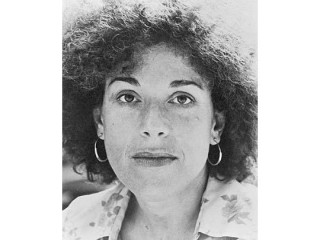
Judith Rossner biography
Date of birth : 1935-03-31
Date of death : 2005-08-09
Birthplace : New York City, New York, U.S.
Nationality : American
Category : Famous Figures
Last modified : 2011-08-22
Credited as : Novelist, Looking for Mr. Goodbar,
0 votes so far
Born in 1935 in New York, Rossner grew up as Judith Perelman in the Bronx. Her father was a textile merchant, and her mother, a teacher, encouraged her daughter's literary ambitions. She penned short stories during her years at Taft High School before moving on to the City College of New York, but dropped out when she married fellow student Robert Rossner in 1954. After starting a family, the couple moved to a New Hampshire commune to run a progressive school there, but eventually separated. Rossner moved back to the city and worked as a secretary to support her young son and daughter. During her spare time she managed to write her first novel, To the Precipice. The 1966 tale centered around a married woman who has an affair, becomes pregnant from it, and leaves her husband.
Rossner authored two subsequent works, Nine Months in the Life of an Old Maid in 1969 and Any Minute I Can Split three years later, the latter novel concerning a pregnant woman who flees to a commune and finds it anything but utopian. During the first weeks of 1973, Rossner followed a murder case that dominated New York City newspaper headlines at the time: a 28-year-old teacher of deaf children, Roseann Quinn, had jettisoned her strict Roman Catholic upbringing and was enjoying the new era of sexual freedom for unmarried women. Quinn frequented the so-called "singles bars" of the time, apparently took a man back to her West Side apartment on New Year's Eve, and was discovered stabbed to death a few days later.
Hoping to produce a salable magazine article, Rossner first proposed the story that became Looking for Mr. Goodbar to Esquire magazine, which declined to publish it when the suspect was apprehended, fearing it would complicate his legal defense. Rossner wrote a fictionalized version instead, and the film rights to it were sold even before Simon & Schuster published it. A New York Times review of the novel asserted that "the sureness of Judith Rossner's writing and her almost flawless sense of timing create a complex and chilling portrait of a woman's descent into hell that gives this book considerable literary merit," according to Hillel Italie in the Boston Globe. The title spent weeks on the best-seller lists of 1975, selling more than four million copies, and gave Rossner financial independence for life.
In some conservative circles, the book was interpreted as a morality tale warning sexually liberated women that they, too, might meet a similar end. Rossner refused to link either her character's fate or the Quinn murder to anything but loneliness. "It's astonishing what some women will put up with just to have a warm body," she remarked a few years later, according to Mary Rourke in the Los Angeles Times "Some of the brightest women I know are obsessed with the search. It's very sad." The 1977 film was a box-office and critical hit, but Rossner was unhappy with the translation of her story to the big screen and commented that it would have turned out worse without the talented Keaton in the lead.
Rossner produced several more novels, none of which replicated the phenomenon of Looking for Mr. Goodbar. A 1983 title, August, was a modest success, but afterward she was struck with viral encephalitis, which caused short-term memory loss and made writing profoundly difficult. After taking some years off, she returned in 1990 with His Little Women, a modern-day spin on the classic Louisa May Alcott novel Little Women. In her final years Rossner suffered from diabetes and leukemia, and died on August 9, 2005, at the age of 70 at New York University Medical Center. A second marriage ended in divorce; she is survived by her third husband, Stanley Leff; her son, Daniel Rossner; her daughter, Jean Rossner, and three grandchildren, as well as a sister.
Remembered as a writer who deftly captured women's apprehensions over their expected roles as wives and mothers during a period of significant social change, Rossner was pragmatic about the notion of female solidarity. "All women are great friends until they're in competition for a man or a job," she once replied when asked about the feminist movement, according to her Washington Post obituary by Adam Bernstein, "and then they're not such great friends."
















